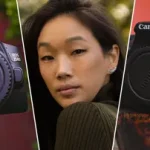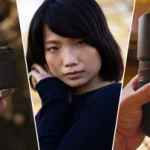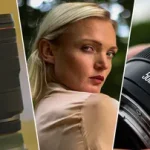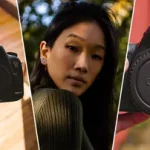Ah, I see we meet yet again. Is the Yongnuo EF 50mm f1.8 on your radar in 2023, but you’re trying to figure out if it’s as good as first-party Canon lenses? Join us in this review as we weigh the pros and cons of this very affordable lens, and decide whether it’s still worth a buy.

Size & Build
Right, so, how portable is it? The EF 50mm f1.8 lens measures 73 x 55mm, or 2.87 x 2.17″, and weighs 120g, or 4.2oz.
The lens doesn’t have the most solid feeling construction, and its mount is made of plastic, which isn’t great either. We’ll delve into this more a bit later on in the review, so make sure to stick around for that.
Aperture & Focal Length
Now, let’s examine the aperture and then the focal length of this lens. As the name suggests, the Yongnuo EF 50mm f1.8 has a maximum aperture of f1.8.
It’s worth specifying that a smaller f-number represents a wider aperture, which means improved light-gathering capabilities. We’ll also cover later in the review what the EF means if you’re unfamiliar.
Now, the remaining figures in the name of the lense specify the focal length, which represents the lens’ magnification. The focal length of this lens is 50mm, which is neither too broad nor too narrow.
A common characterisation of a 50mm focal length is that it appears to be close to what our eyes see. Since the lens has a fixed focal length, it is called a prime lens.

Prime
So, why use a prime lens instead of a zoom lens? Aren’t zoom lenses more versatile?
Prime lenses tend to produce sharper images due to their fixed focal length, which is one of the benefits of using one.
Ok, so which focal length is better? Different focal lengths can result in unique outcomes as they have different distortion levels.
The 50mm lens has a more narrow field of view, meaning it will capture less in the frame compared to a photo taken with a 35mm lens taken from the same spot.
Despite this, 50mm lenses are popular among photographers due to how versatile they are. We’ll delve deeper into this aspect in later parts of the review.
Distortion
It’s crucial to remember that different focal lengths can affect the look of the subjects in a photo because of their specific distortion characteristics.
For instance, a person’s face may appear slightly altered when captured with a 50mm lens, compared to a 85mm lens, even if the photographer steps back to balance out the extra zoom of the 85mm lens.
In general, 85mm is considered the ideal focal length for portrait photography as it is believed to create the most attractive representation of the subject’s face. 50mm lenses are often considered a close second due to their proximity to 85mm.
This is not a hard rule, but it’s something to remember.

Image Quality
Now, let’s discuss the kind of images that this lens can produce.
Minimum Focusing Distance
Ok, so what can this lens do? Let’s start by covering its minimum focusing distance. The minimum focusing distance refers to the closest distance at which a lens can focus on a subject.
For example, when trying to take a close-up picture of a flower, as you move closer to it, you might realise that, eventually, the camera won’t be able to focus.
In simpler terms, a lens with a shorter minimum focusing distance allows you to get closer to your subject, thus giving you the ability to capture more intricate details.
In the case of the Yongnuo 50mm f1.8, its minimum focusing distance is 45cm, or 1.48ft.
Sharpness
Ok, so how sharp is it?
When shooting wide open at f1.8, it can be a bit hit or miss, but this lens can be surprisingly sharp, especially when you take photos with a narrower aperture. You’ll be perfectly fine if you’re mostly taking photos for social media and online use.
Chromatic Aberration
What about chromatic aberration?
It does exhibit some chromatic aberration, but I don’t find it an issue, as you generally have to zoom in quite a bit to spot it.
Chromatic aberration usually manifests when taking photos in low light conditions, such as during sunset. It shows up as a colour bleed along straight edges in the images.
Again, most people won’t ever spot this but knowing that both lenses exhibit it is essential. Practically any lens can, though more affordable lenses tend to show it more.
Vignetting
Right, what about vignetting?
When it comes to that, the lens does exhibit some. However, this isn’t a huge problem, as vignetting can be easily corrected in post-production.
I personally quite like some vignetting in my photos, as I find that it tends to give them more depth.
Image Stabilisation
Right. What about IS, or image stabilisation? Does it have it?
Nope, this lens does not have Image Stabilisation. This is not ideal, as IS helps to optically smooth out video and reduces motion blur in photos.
I actually film all of my B-roll with a stabilised lens, specifically, the Canon RF 15-35mm f2.8 L IS USM; link down below if you want to check it out.
Now, you can technically film steady video with this lens, like in the example, which you can see right now, but there’s a massive catch to it. Stick around, as I’ll explain how this was achieved later in the review.
Autofocus
Ok, what about autofocus?
Erm, the autofocus isn’t the best. This is to be expected, given this lens’s price. It can also be a bit slow and it sometimes hunts a bit before landing on the subject.
It’s also quite noisy, so do bear that in mind. If you’re taking photos of stationary subjects, like objects, or people whose portrait you’re taking, it won’t be a problem.
If you’re trying to catch fast-moving subjects with it, though, you might experience some frustration.
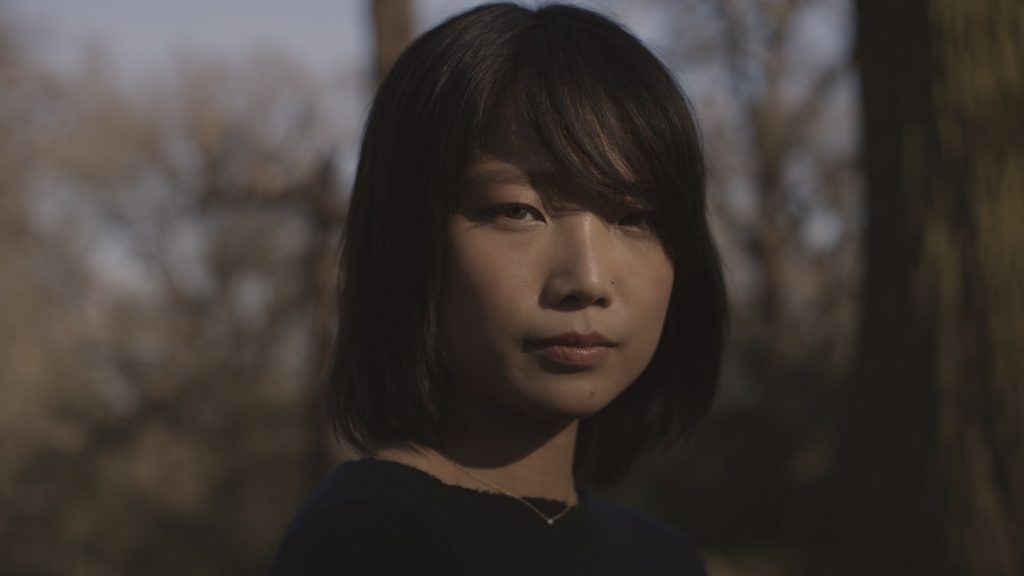
Vlogging
Ok, what about vlogging? Can it be used for that? Unfortunately, the lens has limitations regarding this application, so let’s discuss them.
Firstly, the lens does not have built-in image stabilisation, or IS, which can result in shaky footage. Having IS on a vlogging lens is ideal, as this will be done optically, in the lens, which is the best kind of image stabilisation.
While mounting this lens on a camera with in-body image stabilisation, or IBIS, such as the Canon R5, can help mitigate the lack of built-in IS, there’s another issue to consider.
This lens is relatively zoomed in, meaning that even when using a Gorillapod, its focal length will make it far too zoomed in for vlogging. As a result, the image will probably end up being too zoomed in on your face, thus making the footage unusable.
Shake
Now, if you recall, I mentioned earlier that you can actually get good handheld video with it. Here’s the catch. As hinted at a few moments ago, this footage was filmed with a Canon R5, in combination with an adaptor, so that you can actually mount the lens onto the RF body.
The R5, due to its exorbitant price, actually packs loads of useful features, such as in-body image stabilisation. The camera optically stabilises the footage, so even if your lens doesn’t have that, it can still work.
At this point, I’d really recommend you watch the video, so you can see all of the examples.
Now, the footage is shot at 120fps and slowed down to 24fps, which means that the footage has been slowed down by a factor of five. This smoothes out the image and makes the shake less obvious. The handheld video is far too shaky on a normal camera, without IBIS, as you can see when the lens is mounted on a Canon 77D.
YouTubers
What if you don’t care about vlogging, but you just want to make videos with your camera on a tripod?
In this particular case, this lens would be rather great. Not only can you film in darker environments, due to its wide f1.8 aperture, but you will also get nicer Bokeh.
When filming on a tripod, the presence or lack of IS no longer matters, as the footage will be stable.
Compatibility
Right, so what cameras can I mount this lens on?
The Canon model of the Yongnuo 50mm f1.8 lens has an EF mount, which means it can work on both EF and EF/S cameras. As hinted earlier, the lens can also work on an RF camera, using an adaptor.
I’ve actually reviewed both the Canon R and the Canon R5 on here, so feel free to check that out if you’d like.

Applications
Ok, so what is this lens designed for?
Portraits
What if you want to do portraits? Yes, it does well for portraits, as some of its weaknesses, like slower autofocus, are not an issue. Its wider aperture also allows for more light and enables shooting in a broader range of environments.
Street Photography
What if I want to do street photography? Given that a lot of street photography is basically portraiture, yeah, it would work just fine. The fact that it has a focal length of 50mm is also great, as that makes the lens somewhat zoomed in, which means you don’t have to get too close to your subjects.
Product Photography
What if I want to take photos of products? It would work just fine for product photography.
Right, what about landscape photos? When it comes to landscapes, the rules really go out the window. Any lens would really be suitable, depending on what you’re looking to do.
As a beginner, I’d recommend using a wider lens, which this lens is not. That shouldn’t stop you from going out and trying out landscape photography with what you have though.
Fashion Photography
How about fashion photography? Regarding fashion, just like with portraiture, the Yongnuo EF 50mm f1.8 lens would be well suited.
Documentary
What about documentary-style shooting? When it comes to documentary work, I’d argue that you’d want a variable lens, over a prime one. In this case, the lens is prime, which is not ideal.
Zooming in and out on the fly offers you more versatility, which can come in handy when doing documentary work. I’ve covered quite a few lenses on my channel. You can find links down below, or click the card in the top right corner.
Sports, or Wildlife
What if I want to capture sports or wildlife? Given its focal length, this lens would not be suitable for capturing sports, or wildlife. Ideally, you want a long zoom lens to capture the action from a distance.
There are a few other factors at play, but that’s beyond the scope of this review. Simply put, this lens is not zoomed enough to comfortably capture the action from a distance. Also, as mentioned earlier, its AF is rather slow and somewhat inconsistent, meaning you’ll miss many shots.
Weddings & Events
What about weddings, or events? Right, so when it comes to that, what is the main subject you must capture? It’s people, right?
General Lens
If you can only use one lens, ideally, you’d want something which is good for portraits. This lens is quite good at portraits, so it’ll do just fine.
Additionally, you can capture all the detail shots with the same lens as well, and you can still do group shots. All you need to do is take a few steps back, to accommodate the more zoomed-in lens.

Longevity
Ok, so how long can I expect this lense to last?
Mount
One of the first things you need to look at in terms of longevity is whether the lens has a metal, or a plastic mount. In this case, it has a plastic mount, which is not ideal.
Weather Sealing
Another thing to look out for when it comes to longevity is whether the lense have weather sealing, and of which type.
In this case, this lens doesn’t have weather sealing, which is to be expected, given its price point.
Filters
Many photographers, including myself, like to add an extra layer of protection for the lens element by using a UV filter.
I use Sigma ceramic UV filters that stay on my lenses all the time, having been added right after I bought the lens.
Although Sigma ceramic UV filters can be pricey, it’s worth it for the added protection of your more expensive lenses. Having a filter attached to the lens also eliminates the need for lens caps, although they can still be used as desired.
When buying filters for these lenses, it’s crucial to consider its filter size, which differs from its focal lengths. In this case, its filter size is 52mm. Remembering this is essential, as many people initially mistake filter size for focal length.
This lens is obviously not very expensive, so I don’t know if I’d even purchase a UV filter for it. A really good one, like the Sigma ceramic ones, are pricey, and poor ones might impact your image quality a bit too much.
Buying a hood for it might be a good middle ground in this case.
Recommendations
I hope this has been helpful. I invite you to have a look at some of my other articles. We have something for everyone, whether you’re interested in audio, or cameras and lenses. Alternatively, if you prefer video reviews, feel free to have a look at my YouTube channel.
Finally, down below you will find all of the items I talked about in this article.
